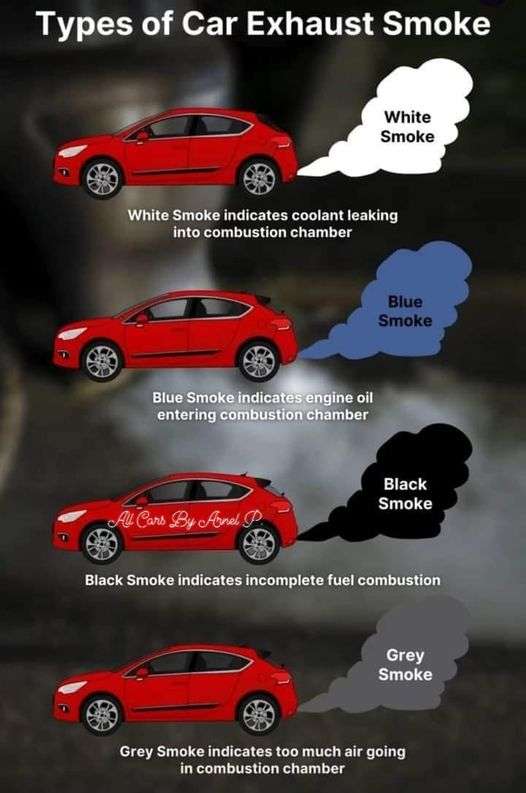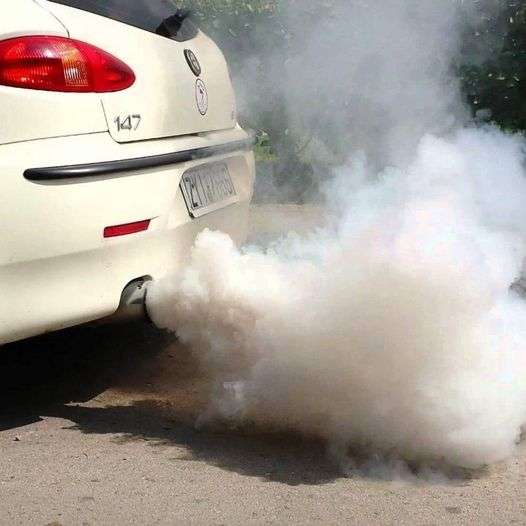Our reporter
Car exhaust smoke is often a clear indicator of a vehicle’s engine health. While some smoke may be harmless, unusual colours can point to serious underlying issues.
Understanding these smoke colours can help you identify potential problems early on, avoiding costly repairs down the line. Here are the four main types of exhaust smoke and what they indicate:
Black Smoke
Black smoke suggests that the engine is burning too much fuel, a condition known as running rich. This imbalance in the air-fuel mixture may be caused by issues like a clogged air filter, malfunctioning fuel injector, or a damaged fuel pressure regulator.
Ignoring black smoke could lead to poor fuel efficiency and long-term engine damage.
White Smoke
Thick, white smoke typically means that coolant is entering the engine’s combustion chamber and being burned alongside the fuel.
This is often the result of a blown head gasket, a critical issue that can lead to engine overheating. Other possible causes include a damaged cylinder head or a cracked engine block. If white smoke appears, it’s essential to address the issue immediately to avoid more severe engine damage.
Blue Smoke
Blue smoke is a tell-tale sign that oil is being burned in the engine, usually due to oil leaking into the combustion chamber.
This can be caused by worn valve seals, faulty piston rings, or a malfunctioning PCV (Positive Crankcase Ventilation) valve. Blue smoke is often accompanied by other symptoms like engine misfires or excessive shaking while idling, indicating that repairs are needed to prevent further oil consumption and engine wear.

Grey Smoke
Grey smoke can sometimes be confused with blue smoke but usually indicates the same issue: the engine is burning oil.
Like blue smoke, grey smoke can result from leaky valve seals or piston rings, and it’s important to investigate these causes to prevent further damage. In some cases, grey smoke might also suggest transmission fluid being burned or a malfunctioning turbocharger in turbocharged vehicles.
In summary, understanding the colour of your car’s exhaust smoke can provide valuable insight into potential engine problems.
Black smoke points to excessive fuel consumption, white smoke signals coolant leaks, blue smoke indicates oil burning, and grey smoke suggests various oil-related issues. If you notice any unusual exhaust smoke, it’s crucial to consult a mechanic to diagnose and address the problem before it escalates.







